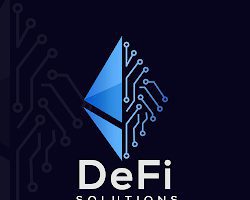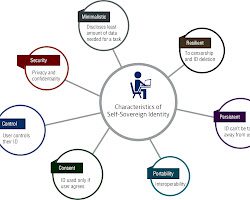How Will Web3 Change The Way Of Digital Banking
Web3 refers to the third generation of the internet, characterized by a decentralized and user-centric approach to online interactions. It aims to overcome the limitations of Web 2.0, which is the current phase of the internet characterized by centralized platforms and services.
Web3 is often associated with blockchain technology, which is a distributed ledger that enables secure and transparent transactions without the need for intermediaries. Blockchain serves as the foundation for many Web3 applications, providing a decentralized infrastructure that ensures trust and immutability.
One of the key features of Web3 is the concept of decentralization. In Web3, power and control are distributed among the users rather than concentrated in the hands of a few central entities. This is achieved through the use of peer-to-peer networks, consensus algorithms, and smart contracts. By eliminating the need for intermediaries and central authorities, Web3 aims to empower individuals and foster greater autonomy, privacy, and ownership of data.
Web3 also emphasizes the importance of user-centricity. It focuses on giving individuals greater control over their online identities and data. Users have the ability to manage their own digital identities, control access to their personal information, and choose how their data is utilized. This shift towards user empowerment and privacy is in stark contrast to the data-hungry nature of many Web 2.0 platforms.
Another crucial aspect of Web3 is the concept of interoperability. Web3 aims to create an ecosystem where different applications and platforms can seamlessly interact and share data. This is achieved through open protocols and standards that enable cross-platform compatibility. Interoperability encourages innovation, as developers can build on existing infrastructure and create new applications that can interact with other decentralized systems.
Web3 applications span a wide range of industries and use cases. One prominent example is decentralized finance (DeFi), which leverages blockchain technology to enable financial services without the need for traditional intermediaries. DeFi platforms facilitate activities such as lending, borrowing, and trading of digital assets, all while ensuring transparency, security, and accessibility.
Other applications of Web3 include decentralized social networks, where users have greater control over their data and interactions; decentralized marketplaces, which enable peer-to-peer transactions without intermediaries; and decentralized governance systems, where decision-making is distributed among participants.
In summary, Web3 represents a paradigm shift towards a decentralized and user-centric internet. It leverages blockchain technology and emphasizes principles such as decentralization, user empowerment, privacy, and interoperability. By enabling trust, transparency, and autonomy, Web3 has the potential to revolutionize various industries and reshape the way we interact and transact online.
How Web3 is related with digital banking?
Web3 has the potential to revolutionize the digital banking sector by introducing decentralized, secure, and transparent financial services. It offers a range of benefits and opportunities that can transform the way banking and financial transactions are conducted.
1. Decentralization: Web3, built on blockchain technology, removes the need for centralized intermediaries such as banks or payment processors. This decentralized approach eliminates the reliance on a single entity for financial transactions, making the system more resilient, transparent, and resistant to censorship.
2. Trust and Security: Web3 employs cryptographic techniques to ensure the security and integrity of financial transactions. Blockchain’s distributed ledger technology provides a transparent and tamper-proof record of all transactions, reducing the risk of fraud and enhancing trust in the system. Users have greater control over their funds and can verify transactions independently.
3. Peer-to-Peer Payments: Web3 enables direct peer-to-peer (P2P) transactions without the need for traditional intermediaries. Users can transact directly with each other, facilitating faster, more efficient, and cost-effective transfers. This eliminates the delays and fees associated with traditional banking systems, enabling instant cross-border payments and reducing transaction costs.
4. Financial Inclusion: Web3 has the potential to extend financial services to the unbanked and underbanked populations. With Web3-enabled digital banking, individuals who lack access to traditional banking services can participate in the global financial ecosystem. All they need is a smartphone and an internet connection to access basic financial services such as savings, loans, and payments.
5. Tokenization of Assets: Web3 enables the tokenization of real-world assets, such as currencies, commodities, or securities, into digital assets that can be easily traded and transferred on blockchain networks. This opens up new possibilities for fractional ownership, liquidity, and efficient trading of assets. It also enables the creation of innovative financial products and services, such as decentralized lending platforms, prediction markets, and investment platforms.
6. Smart Contracts and Automation: Web3 introduces smart contracts, which are self-executing contracts with predefined rules and conditions. These contracts automatically execute transactions when specific conditions are met. Smart contracts enable automation and programmability of financial processes, such as loan agreements, insurance claims, or escrow services. This reduces the need for intermediaries and streamlines the execution of financial operations.
7. Data Privacy and Ownership: Web3 emphasizes user control and ownership of personal data. Individuals can choose which data to share and have greater visibility and control over how their data is utilized. This is in contrast to traditional banking systems where user data is often collected, stored, and monetized by banks and financial institutions. Web3-based digital banking can provide individuals with more secure and privacy-focused financial services.
Overall, Web3 technologies offer the potential to disrupt and transform the digital banking sector. By leveraging decentralization, trust, security, and innovative features such as smart contracts and tokenization, Web3 can enhance financial inclusivity, efficiency, and user control in the realm of digital banking.
Also read: Signzy Builds A Digital Blockchain Platform For Smarter Banking Future
Top 10 ways Web3 will change the way of Digital Banking
Web3 is poised to revolutionize the way we interact with the internet, and the banking industry is no exception. Here are 10 ways Web3 could change the way we bank:
- Decentralized finance (DeFi): DeFi is a financial system that is built on top of blockchain technology. This means that it is not controlled by any central authority, such as a bank or government. This could lead to more transparency and efficiency in the financial system, as well as greater access to financial services for people who are currently underserved.

- Tokenization: Tokenization is the process of converting real-world assets into digital tokens. This could be used to tokenize assets such as property, stocks, or even artwork. This could make it easier to trade these assets, as well as to fractionalize them, so that they can be owned by multiple people.
- Smart contracts: Smart contracts are self-executing contracts that are stored on the blockchain. This means that they do not require any third-party verification or enforcement. This could lead to more trust and efficiency in the financial system, as well as greater security for users.

- Open banking: Open banking is a system that allows financial institutions to share customer data with third-party providers. This could lead to more competition in the financial sector, as well as to more personalized and innovative financial products and services.
- Privacy-preserving payments: Web3 could make it possible to make payments without revealing your identity. This could be done using cryptocurrencies or other privacy-preserving technologies. This could lead to greater security and privacy for users, as well as to more freedom to choose how your data is used.

- Micropayments: Web3 could make it possible to make small payments, such as a few cents or even a fraction of a cent. This could be used to pay for things like micro-content, such as articles or images, or to tip content creators. This could lead to a more sustainable and equitable digital economy.
- Blockchain-based identity: Blockchain-based identity could provide a more secure and private way to verify your identity online. This could be used to log in to websites, make payments, or access other online services. This could lead to a more secure and seamless online experience for users.

- Crowdfunding: Web3 could make it easier to crowdfund projects. This could be done using cryptocurrencies or other blockchain-based technologies. This could lead to a more democratic and inclusive financial system, as well as to more innovation.
- Global payments: Web3 could make it easier to make payments across borders. This could be done using cryptocurrencies or other blockchain-based technologies. This could lead to a more efficient and cost-effective global financial system.

- User empowerment: Web3 could give users more control over their data and financial assets. This could be done through the use of self-sovereign identity, smart contracts, and other Web3 technologies. This could lead to a more transparent and equitable financial system, as well as to greater freedom for users.
These are just a few of the ways that Web3 could change the way we bank. As the technology continues to develop, we can expect to see even more innovative and disruptive applications in the years to come.
Also read: The Rise Of Digital Banking: Top 10 Digital Banking Services That Changed The World
Benefits of using Web3 for Digital Banking
Using Web3 for digital banking brings numerous benefits that can enhance the efficiency, security, and user experience of financial services. Here are some key advantages:
1. Decentralization and Trust: Web3 is built on decentralized blockchain technology, removing the need for a central authority or intermediary in financial transactions. This decentralization fosters trust among participants as transactions are transparent, verifiable, and recorded on a distributed ledger. Users can have confidence in the integrity of the system, reducing the reliance on traditional banking systems and their associated vulnerabilities.
2. Enhanced Security: Web3 employs cryptographic techniques to ensure the security of financial transactions. Transactions on the blockchain are secured through consensus algorithms, making it extremely difficult for malicious actors to tamper with or alter transaction records. Additionally, user funds are stored in secure digital wallets, protected by private keys and encryption. This heightened security reduces the risk of fraud, identity theft, and unauthorized access to accounts.
3. Improved Efficiency and Speed: Web3 facilitates peer-to-peer (P2P) transactions without the need for intermediaries. This eliminates the time-consuming processes associated with traditional banking, such as manual verification, reconciliations, and clearinghouses. With Web3, financial transactions can be executed directly between users, enabling faster settlements and immediate availability of funds. This can significantly reduce transaction times, especially for cross-border payments.
4. Cost Reduction: By eliminating intermediaries and streamlining processes, Web3-based digital banking can significantly reduce transaction costs. Traditional banking systems often involve fees for various services, such as wire transfers, currency conversions, and account maintenance. Web3 enables low-cost or even feeless transactions, making financial services more accessible and affordable for users, especially for those in underserved regions.
5. Financial Inclusion: Web3 has the potential to extend financial services to the unbanked and underbanked populations. With minimal requirements such as a smartphone and internet access, individuals who lack access to traditional banking infrastructure can participate in digital banking. Web3 enables individuals to create digital identities, access digital wallets, and engage in basic financial activities like savings, payments, and lending. This promotes financial inclusion, economic empowerment, and access to global markets.
6. Transparency and Auditability: Web3’s distributed ledger technology provides a transparent record of all financial transactions. This transparency enhances accountability and auditability, as all transaction data is permanently recorded and can be verified by participants. This can help in mitigating financial fraud, improving regulatory compliance, and enhancing trust between users and service providers.
7. Ownership and Control of Data: Web3 emphasizes user ownership and control of personal data. Users have the ability to manage their own digital identities and control access to their financial information. This gives individuals greater privacy and control over their data, reducing the risk of data breaches and unauthorized sharing of personal information by banks or other financial institutions.
8. Innovation and Interoperability: Web3’s open protocols and standards encourage innovation and interoperability among different financial applications and platforms. Developers can leverage existing infrastructure and create new financial products and services that seamlessly integrate with other decentralized systems. This fosters a collaborative ecosystem where users can access a wide range of innovative and customizable financial solutions.
Overall, using Web3 for digital banking offers benefits such as decentralization, enhanced security, efficiency, cost reduction, financial inclusion, transparency, data ownership, and innovation. These advantages have the potential to transform the way financial services are delivered, making them more accessible, secure, and user-centric.
Also read: Banking In The Metaverse: VR Powering The Banking Experience
Future of Web3 and Digital Banking
The future of Web3 and digital banking is promising, as it holds the potential to reshape the financial industry by introducing innovative technologies, enhancing user experiences, and fostering financial inclusion. Here are some key aspects that are likely to shape the future of Web3 and digital banking:
1. Mainstream Adoption: As the awareness and understanding of Web3 technologies grow, we can expect a broader adoption of decentralized digital banking solutions. Traditional financial institutions are exploring ways to incorporate Web3 principles into their operations, such as integrating blockchain for secure and transparent transactions. Moreover, startups and fintech companies are emerging with Web3-focused business models, aiming to disrupt traditional banking systems and cater to evolving user demands.
2. Decentralized Finance (DeFi) Evolution: DeFi, built on Web3 principles, has already gained significant traction in recent years. The future of Web3 and digital banking will likely see the continued expansion and maturation of DeFi applications. We can expect the development of more sophisticated decentralized lending platforms, decentralized exchanges, stablecoins, and other financial instruments. DeFi will likely move beyond the realm of cryptocurrency to incorporate real-world assets, enabling broader investment opportunities and increased liquidity.
3. Interoperability and Integration: Web3 aims to create an interconnected ecosystem where different applications and platforms seamlessly interact. The future of digital banking will involve improved interoperability, allowing users to access a wide range of financial services and products from various providers without the need for multiple accounts. Interoperability will foster a more seamless and integrated financial experience, where users can navigate between different applications, manage their finances, and execute transactions effortlessly.
4. Enhanced Privacy and Data Ownership: Web3 emphasizes user control and ownership of personal data. The future of digital banking will prioritize privacy and data protection, empowering users to manage their financial information securely. Advancements in privacy-focused technologies, such as zero-knowledge proofs and decentralized identity solutions, will enable users to share selective data while maintaining confidentiality. Users will have greater control over their data, with the ability to monetize or share it securely with trusted entities if desired.
5. Integration of Artificial Intelligence (AI) and Automation: The combination of Web3 technologies with AI and automation will revolutionize digital banking. AI-powered chatbots and virtual assistants will provide personalized financial advice, streamline customer support, and enhance user experiences. Smart contracts and AI algorithms will automate various financial processes, reducing manual intervention, minimizing errors, and improving efficiency. AI will also play a crucial role in fraud detection and risk assessment, bolstering security in digital banking.
6. Regulatory Landscape and Compliance: As Web3 technologies continue to evolve, regulatory frameworks will adapt to address the unique challenges and opportunities they present. Governments and regulatory bodies will work towards striking a balance between fostering innovation and ensuring consumer protection. Standards and regulations will be developed to address issues like anti-money laundering (AML), know-your-customer (KYC) procedures, and data privacy within the Web3 and digital banking space.
7. Financial Inclusion and Access: Web3 technologies have the potential to bridge the gap between the banked and unbanked populations. The future of digital banking will focus on expanding financial inclusion by providing access to financial services, such as payments, lending, and savings, to individuals in underserved regions. Web3-enabled solutions can leverage mobile devices and internet connectivity to reach the unbanked population, enabling economic empowerment and participation in the global financial ecosystem.
8. Collaboration and Partnerships: Collaboration between traditional financial institutions, fintech startups, and Web3-focused companies will become more prevalent. Traditional banks may partner with Web3 startups or acquire existing Web3 capabilities to integrate decentralized solutions into their infrastructure. This collaboration will enable the benefits of Web3 to reach a wider user base while leveraging the experience and expertise of traditional banking institutions.
In conclusion, the future of Web3 and digital banking holds great potential for transformative change. With the adoption of decentralized technologies, enhanced privacy and data ownership, integration of AI and automation, and a focus on financial inclusion, we can anticipate a more user-centric, secure, and efficient digital banking ecosystem. The evolution of Web3 and its integration with the financial industry will shape the way individuals and businesses interact with financial services, unlocking new possibilities and opportunities for innovation.
Also read: The Future of Money: How Digital Currency is Shaping Entrepreneurial Ventures
Stay informed with daily updates from Blockchain Magazine on Google News. Click here to follow us and mark as favorite: [Blockchain Magazine on Google News].
Get Blockchain Insights In Inbox
Stay ahead of the curve with expert analysis and market updates.
latest from tech
Disclaimer: Any post shared by a third-party agency are sponsored and Blockchain Magazine has no views on any such posts. The views and opinions expressed in this post are those of the clients and do not necessarily reflect the official policy or position of Blockchain Magazine. The information provided in this post is for informational purposes only and should not be considered as financial, investment, or professional advice. Blockchain Magazine does not endorse or promote any specific products, services, or companies mentioned in this posts. Readers are encouraged to conduct their own research and consult with a qualified professional before making any financial decisions.

 Bitcoin
Bitcoin  Ethereum
Ethereum  XRP
XRP  Tether
Tether  Solana
Solana  Dogecoin
Dogecoin  USDC
USDC  Cardano
Cardano  Lido Staked Ether
Lido Staked Ether  TRON
TRON  Avalanche
Avalanche  Stellar
Stellar  Sui
Sui  Wrapped stETH
Wrapped stETH  Chainlink
Chainlink  Toncoin
Toncoin  Wrapped Bitcoin
Wrapped Bitcoin  Shiba Inu
Shiba Inu  Content Bitcoin
Content Bitcoin  Hedera
Hedera  Polkadot
Polkadot  WETH
WETH  LEO Token
LEO Token  Bitcoin Cash
Bitcoin Cash  Uniswap
Uniswap  Litecoin
Litecoin  Hyperliquid
Hyperliquid  Bitget Token
Bitget Token  Pepe
Pepe  Wrapped eETH
Wrapped eETH  USDS
USDS  NEAR Protocol
NEAR Protocol  Ethena USDe
Ethena USDe  Aptos
Aptos  Internet Computer
Internet Computer  Aave
Aave  POL (ex-MATIC)
POL (ex-MATIC)  Ethereum Classic
Ethereum Classic  Monero
Monero  Cronos
Cronos  Render
Render  Mantle
Mantle  Algorand
Algorand  MANTRA
MANTRA  Virtuals Protocol
Virtuals Protocol  Bittensor
Bittensor  Dai
Dai 



